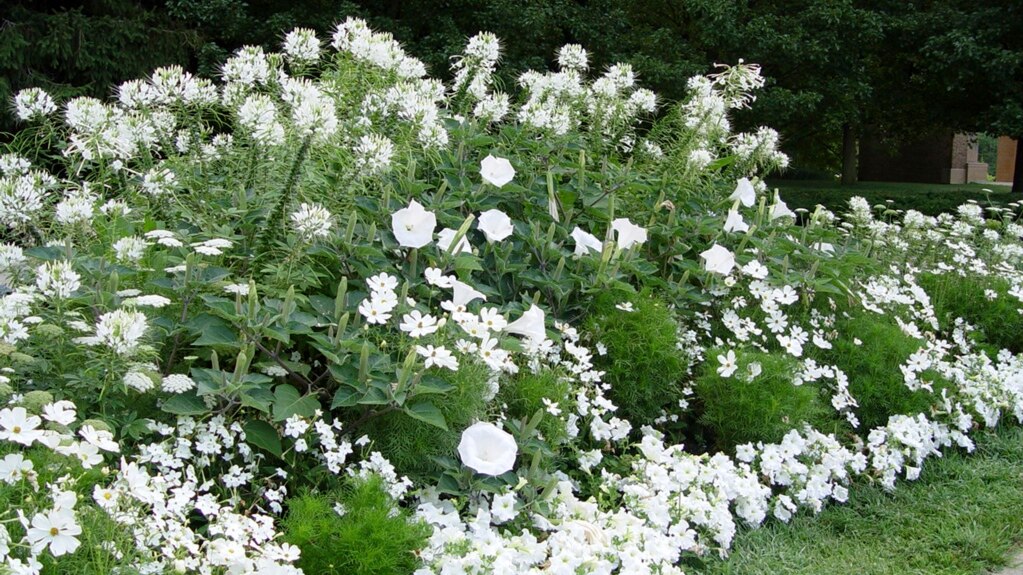Gardeners in the Northern Hemisphere are starting to plan their summer gardens. Most are thinking about how their plants and flowers will look in the bright sunshine in the coming summer.
But when the summer sun goes down in the evening, and you are sitting outside at home, you may not be able to see many flowers in the yard without artificial lighting.
With some planning, you can plant a “moon garden.” That is one you can enjoy by the light of the moon.
Leaves and flowers both show well in moonlight
Jessica Damiano writes about gardening for The Associated Press. She says plants with silver or multi-colored leaves, white or light-colored flowers, or flowers that open only at night are good choices for a moon garden. Another way to enjoy plants in the evening is to choose ones with a pleasing smell. Plant them along a walkway or near a seating area outdoors, where you can enjoy them up close, or within view of a window.
For a moon garden, Damiano suggests planting these kinds of light-colored, moon-reflecting blooms: the moonflower (of course!), as well as Shasta daisy, four o'clock, sweet alyssum, yarrow, snow-in-summer, evening primrose, petunias, New Guinea impatiens and geranium.
Insects that visit flowers at night to collect pollen, such as the sphinx moth, love them, too.
Make it last longer
You can begin the garden early with early bloomers, like lily of the valley, daffodil and azalea. Make the season last longer into the autumn with late bloomers like chrysanthemum and autumn clematis.
Plants with unusual or multi-colored leaves include spotted dead nettle, Japanese painted fern, Jack Frost Siberian bugloss, hostas, silver lamb's ears, dusty miller, Russian sage, silver mound wormwood and some euonymus varieties.
All of these plants can be seen after sundown and especially seem to shine under a full moon.
Good smells make a pleasant garden
If you want good smells to fill your yard in the evening, plant mock orange gardenia, lilac, summersweet, and jasmine. In very warm places, try planting ylang-ylang and frangipani to fill your evenings with pleasure.
Remember that like a painting, a garden needs something behind the attention-getting objects in front. Include a backdrop of woody plants like the sweet-smelling Korean spice viburnum, or white-blooming hydrangeas.
Trees like paper birch white or silver poplar, acacia and eucalyptus light up the night. Find out about those that work best in your climate by talking with other gardeners or a local expert.
Group your plants together
For the best visual effect, plant in groups of three, five or seven, of the same kind of plant. That is a good gardening method in general because it avoids creating a disorganized mixture of plants and flowers. But it is more important in a moon garden. You do not want your single plants to get lost in the dark.
There is one more thing to increase how much you can see your moon garden -– add some small lights that face the plants. Their light will increase the appeal of your moon garden. Think about using other light-colored design elements, as well, such as fencing, plant supports, stones, water features and glass balls.
I’m Jill Robbins.

